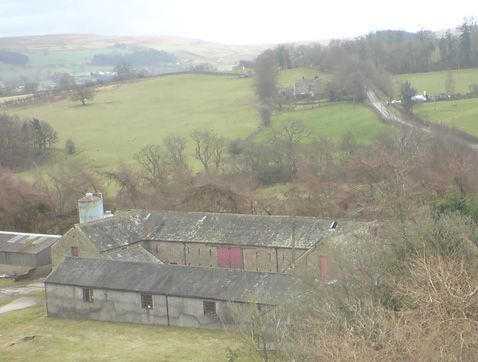






The Cumbria Clock Company Ltd (CCC) was established in 1990 and is situated in the small village of Dacre in the Lake District National Park not far from the picturesque Lake Ullswater. From this base, and using an engineer living in the South of England, the whole country is covered. The CCC are responsible for the annual maintenance of hundreds clocks all over the UK.
From these workshops the CCC has undertaken repairs and restorations to some of the most prestigious clocks in the United Kingdom, as well as many churches and town buildings whose towers house so many horological treasures.
The CCC are responsible for the maintenance of the country’s oldest clock in Salisbury Cathedral, they have undertaken the repairs and automatic winding of the most important astronomical clock at Hampton Court Palace, as well as major restorations at Leeds Town Hall, the large clock at Manchester Town Hall, Manchester, Durham, Hereford and Worcester cathedrals. In 2007 the Company manufactured and installed a temporary drive unit to the Westminster clock better known as Big Ben. For twelve weeks this unit kept the world’s most famous clock showing the correct time, until the restoration of the mechanical clock had been completed.
The CCC prides itself on its ability to manufacture “in-house” all necessary components required for turret clocks, automatic winders, night silencers as well as wheels, pinions and any other parts needed. At Whythenshaw Hall the original turret clock was destroyed by fire, the CCC made a precise replica of the original clock movement that contained only four pillars of the original movement; the remaining components were all designed and manufactured in the workshops.
Restoration and manufacture of dials is a key part of the CCC work. It is preferred to remove the dial from the church and transport it back to the workshops. This ensures that the surface of the dial, be it copper, cast-iron or wood can be properly prepared, before being painted to approved and recognised standards, and then re-gilded using 23 ¾ double thickness English gold leaf. Where necessary skeleton dials can be glazed using traditional, opal glass or if preferred, acrylic. At the same time as undertaking the
redecoration it is strongly advised that the dial motion works (the gearing behind the dial) are dismantled and cleaned. It is only when the hands have been removed, that a full inspection and service can be undertaken. When the dials are returned to site they are always put back into position using stainless steel fixings.
In nearly all cases this work can be undertaken using rope access equipment, thereby avoiding the inconvenience of scaffolding.
The CCC’s strengths are in the dedication of its staff, their technical excellence, flexibility and ability to work in all areas of turret clock horology from, installing auto-regulators and automatic winding units, to undertaking sympathetic restorations on clocks from modern to the most ancient.
Reports and quotations are given free of charge and without obligation, with a full conservation report given after every major project. The Cumbria Clock Company Ltd adheres to all guidelines set by the Council for the Care of Churches and other national conservation bodies.